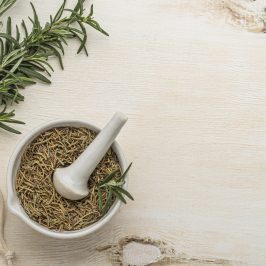The Best Medicinal Plants To Grow At Home
Springtime is a favorite season for many. The days are warm but not overbearingly hot, flowers bloom in abundance, and it means summer is just around the corner. Spring opens up room for an array of fun activities, especially when it comes to gardening. Many people enjoy setting up their own gardens to grow food without resorting to a grocery store. After all, nowadays, it is not easy to pinpoint where some of the stores’ products come from.

Some of the most common garden vegetables are tomatoes, corn, lettuce, potatoes, beans, onions, cucumber, and more. However, garden owners should take advantage of the opportunity they have to grow medicinal plants in their plots and reap the benefits that come with them.
Though some medicinal herbs are common enough to already be in a standard garden, others are harder to come by unless planted. Below is a compilation of plants to considering adding to a garden this summer, along with their medicinal benefits.
Cilantro
Known for its unique flavor found particularly in Mexican dishes, research shows that cilantro is a powerful digestive aid and could help the body remove metals and toxic agents.
Cilantro thrives in cool, moist gardens and can be planted from March through to September.
Peppermint
Commonly found as a toothpaste flavor, peppermint brewed as tea may relieve indigestion, nausea, and vomiting. Peppermint also helps soothe sore and aching muscles when applied topically as a cream or lotion.
Peppermint favors moist gardens and is best planted outdoors from April through to June.
Thyme
Herbalists use Thyme for its antibacterial and antifungal properties to help prevent colds and flu in modern times. Certain varieties also help combat stomach issues in children.
Thyme has a short outdoor lifespan, allowing it to survive outside from the middle of May through to June. However, Thyme can be planted and thrive indoors as early as February and transplanted once the weather gets warm.
Chamomile
These small and delicate flowers pack many beneficial properties. Chamomile is among the best herbs for treating various ailments, such as nervous stress, colic, infections, stomach aches, and stomach disorders found in children.
Chamomile does best planted outdoors from the end of March to the middle of May.
Rosemary
Rosemary is a perfect alternative for those people looking to cut out or substitute caffeine. This herb incites energy and sharpens concentration and memory by conducting more oxygen to the brain.
Rosemary can be grown indoors from February to the middle of April or directly-sowed from the middle of May through to June.
Lavender
Highly recognized for its sweet scent, lavender does more than smell excellent. This herb acts as a mild antidepressant and also helps people get a better night’s sleep. It also assists by alleviating stress and tension and even sunburns when used as a cream.
Lavender can be planted indoors from January to February or directly-sowed from March to the middle of May.
Calendula
Also known as pot marigold, the calendula plant carries antiseptic and antifungal properties, making it great for healing wounds and diaper rashes.
Calendula grows outdoors from March through to May and can be replanted from the end of September through to November.
Cayenne
This spicy red pepper aids circulatory problems and may prevent heart attacks. This plant also contains metabolism-boosting properties and can lower blood pressure.
It is important to note that all of the medicinal plants to grow at home listed above each require different amounts of water, sun exposure, planting method, and overall care. Anyone wanting to grow them in their garden should do extensive research on each plant to determine whether they fit the necessary criteria to thrive.



